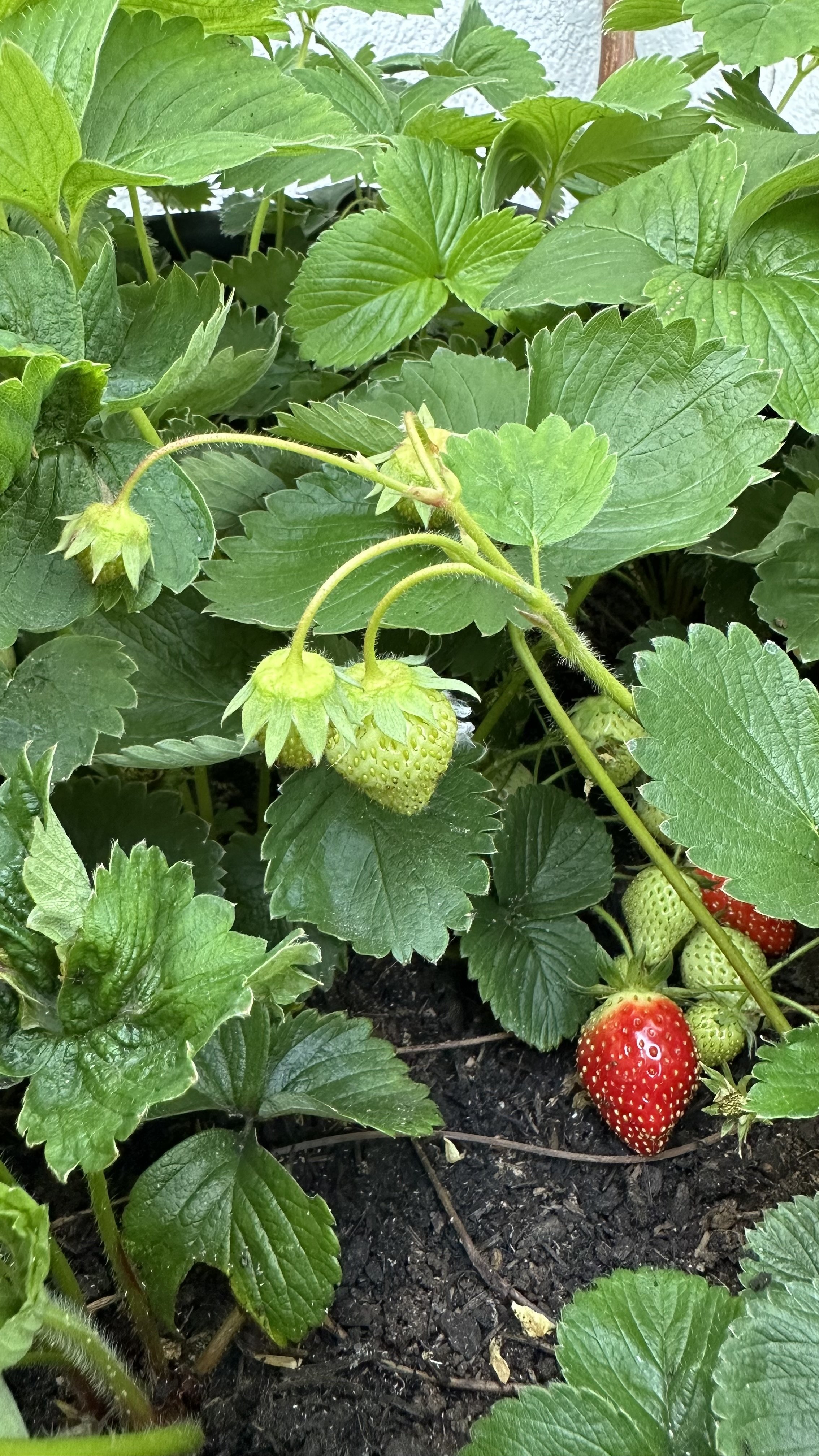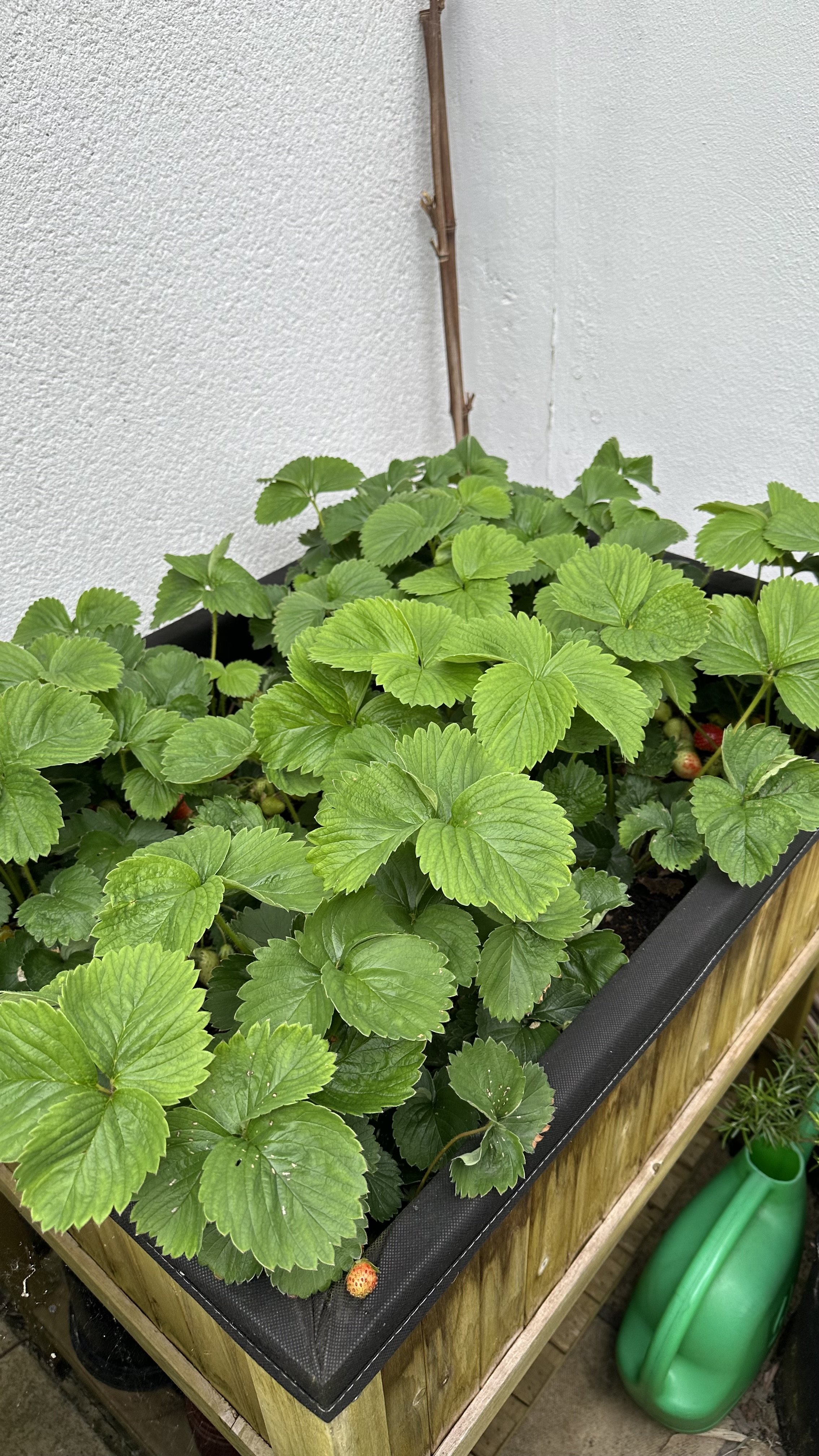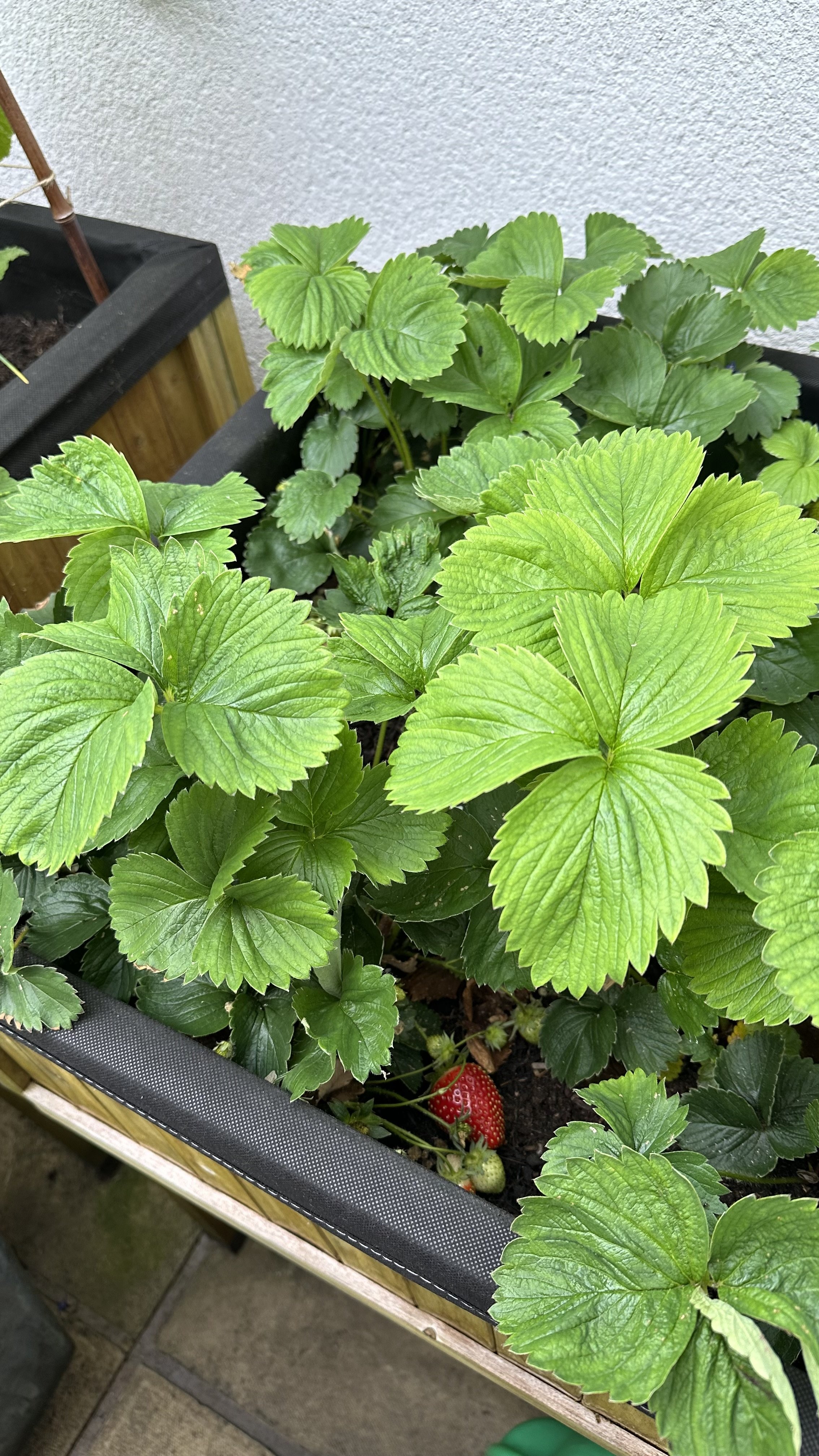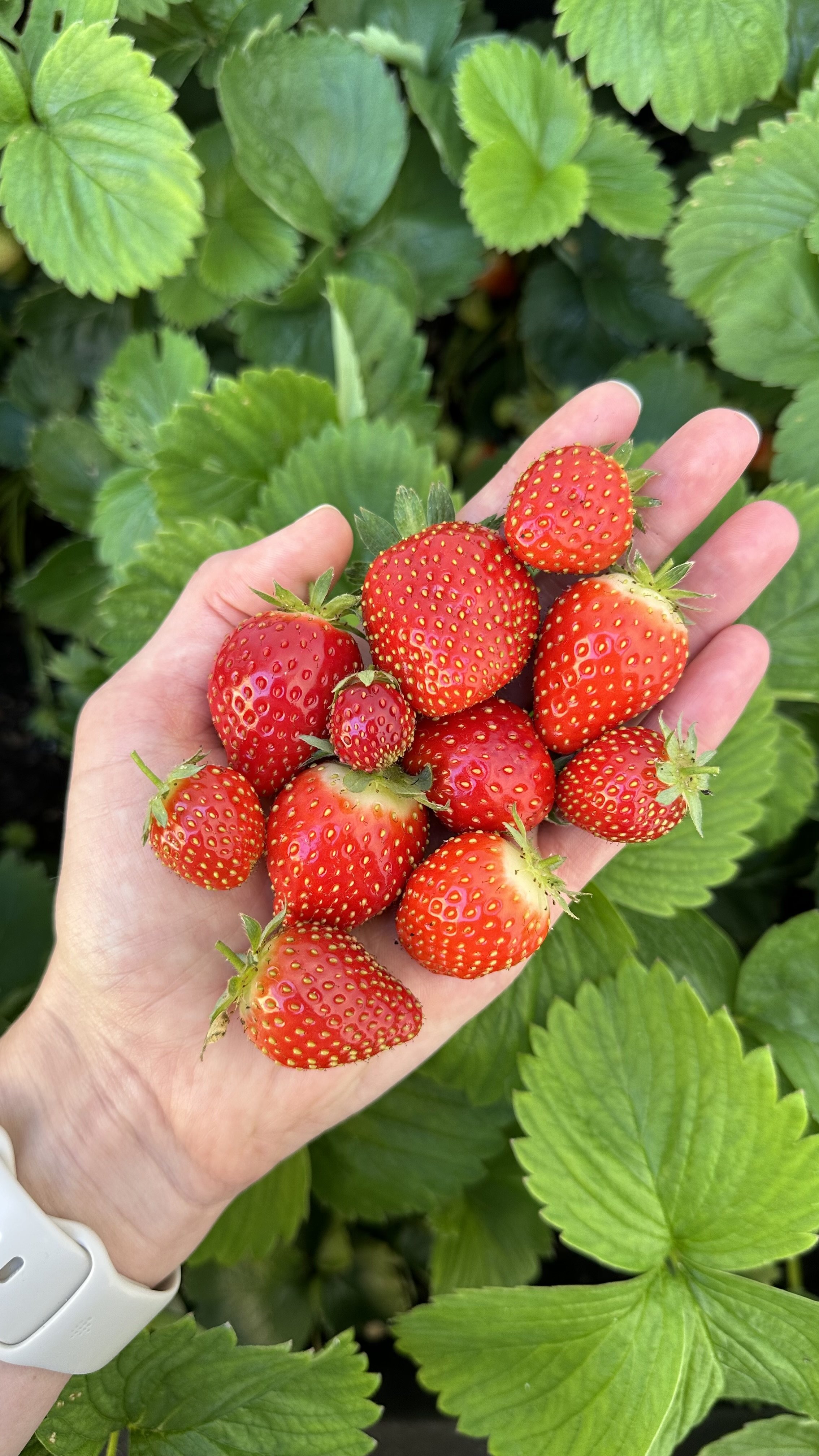How to Plant a Strawberry Patch That Continually Produces Fruit
This website is reader-supported - thank you! This post may contain affiliate links. As an Amazon Associate, I earn from qualifying purchases at no extra cost to you.
Imagine the joy of stepping into your garden to pick juicy, red strawberries, freshly ripened under the warm sunshine in your home strawberry patch.
The experience of growing your own fruit is unmatched and rewarding in so many ways.
Not only are strawberries delicious and versatile, but they're also packed full of nutrients and beneficial antioxidants.
In this step-by-step guide, I will walk you through everything you need to know to plant, care for, and harvest your very own strawberry patch, making the dream of enjoying homegrown strawberries a reality.
This guide is designed to help you cultivate thriving strawberry plants that produce an abundance of fruit, so join us on this journey towards growing strawberries right in your own garden.
To learn more about growing strawberries, check out my guide Top Companion Plants for Growing Juicy, Sweet Strawberries.
How to Prepare the Garden Soil
Strawberries are relatively versatile plants, but they can thrive and produce the best fruit under specific soil conditions.
Here is how to prepare your garden soil for planting strawberries:
1. Checking Soil pH
Strawberries prefer slightly acidic soil with a pH between 5.5 and 6.5.
If you're unsure of your soil's pH, simply use a soil pH tester.
If your soil is more alkaline, you can amend it with elemental sulfur or aluminum sulfate.
If it's overly acidic, lime can be added to increase the pH.
Here is the soil pH tester I recommend using:
2. Improving Soil Structure and Drainage
Strawberries need well-draining soil.
They do not fare well in waterlogged conditions as this can lead to root diseases.
If you have heavy clay soil, consider adding compost, well-rotted manure, or other organic matter to improve its structure and drainage.
These organic materials help break up compacted soil, promoting better root growth and improving the soil's water-holding capacity.
In sandy soils, which drain too quickly, organic matter also helps by retaining water and nutrients that would otherwise wash away.
A layer of organic material can additionally provide nutrients that strawberries need to grow and produce fruit.
Here is the organic compost I recommend using for growing strawberries:
3. Clearing the Planting Area
Before planting, it's crucial to clear the area where your strawberry patch will be.
Use a spade to remove all weeds and their roots as these can compete with your strawberries for nutrients and water.
If you're converting a lawn area into a garden bed, you might need to remove the grass and its root system to prevent it from regrowing.
To learn more about how to do this, check out my guide to How to Remove Grass to Start a Garden.
4. Ensuring Proper Sunlight
While this isn't directly related to soil preparation, it's essential to choose a location for your strawberry patch that receives at least six hours of sunlight each day, like a south-facing or even a west-facing garden location.
Strawberries need plenty of sunlight to grow strong and produce sweet, juicy fruit.
When deciding where to prepare your soil, pick a spot that won't be shaded by buildings or trees.
Preparing the garden soil might seem like a lot of work, but it's an important step to ensure the success of your home strawberry patch.
With a bit of time and effort, you can create the ideal conditions for your strawberry plants to thrive and reward you with a plentiful harvest.
Choosing the Right Strawberry Plants
There are a variety of strawberry plants to choose from, but the most common types for home strawberry patches are June-bearing, ever-bearing, and day-neutral plants.
June-bearing strawberries produce a large, concentrated harvest in late spring to early summer.
Ever-bearing plants produce fruit twice a year—once in the spring and again in late summer or fall.
Day-neutral plants bear strawberries throughout the growing season, but the fruits are often smaller.
Let’s delve further into each type of strawberry.
June-Bearing Strawberries
As the name suggests, June-bearing strawberries typically produce their harvest in June, or late spring to early summer depending on your climate.
They are known for their large, sweet berries, and they produce a heavy, concentrated crop over a period of two to three weeks.
June-bearing strawberries are further classified into early, mid, and late season varieties, offering a chance to stagger planting for an extended harvest period.
The best varieties are 'Earliglow' for an early harvest, 'Honeoye' for mid-season, and 'Allstar' for a later yield.
Here are the ‘Earliglow’ berries I recommend:
Here are the ‘Honeoye’ berries I recommend:
Here are the ‘Allstar’ berries I recommend:
Everbearing Strawberries
Everbearing strawberries produce two to three harvests spread out through the spring, summer, and early fall.
This means you'll get a steady supply of berries throughout the growing season, although the individual harvests are not as abundant as the June-bearing types.
Everbearing varieties are excellent for gardeners who like a continual supply of fresh berries.
'Ozark Beauty' and 'Quinault' are the best everbearing varieties.
Here are the ‘Ozark Beauty’ berries I recommend:
Here are the ‘Quinault’ berries I recommend:
Day-Neutral Strawberries
Day-neutral strawberries are a newer class of strawberries that aren't affected by the length of daylight hours.
They will continue to produce fruit from late spring until the first frost as long as temperatures remain between 35°F and 85°F.
While the berries are usually smaller than June-bearing varieties, the plants are productive, and their yield can rival the total output of June-bearers if well-managed.
'Albion' and 'Seascape' are the best day-neutral varieties to grow.
Here are the ‘Albion’ berries I recommend:
Here are the ‘Seascape’ berries I recommend:
Alpine Strawberries
Also known as wild strawberries, alpine strawberries are a different species from the common garden strawberry.
They produce small, intensely flavored berries throughout the growing season.
These perennial plants are hardy and easy to grow, making them a good choice for border plantings or edging.
Here are the alpine strawberries I recommend growing:
When choosing your strawberry plants, also consider the disease resistance of different varieties.
Some are more resistant to common strawberry diseases, which can make your gardening experience much smoother.
Lastly, local climate and conditions play a vital role in strawberry selection.
There's no 'one size fits all' strawberry plant. The best choice will depend on your specific preferences, needs, and gardening conditions.
How to Plant Strawberries
1. When to Plant
The ideal time to plant strawberries depends on your climate. In cooler regions, plant in early spring as soon as the soil is workable.
For warmer regions, plant strawberries in late fall or early winter to allow the plants to establish before the temperatures rise.
2. Plant Spacing
Proper spacing between plants is essential for air circulation, which can help prevent fungal diseases.
Create rows about 3-4 feet apart. Within each row, plant your strawberries about 12-24 inches apart depending on the variety.
June-bearing strawberries, which send out more runners, typically need more space than everbearing or day-neutral types.
3. Planting Depth
When planting, be sure that the crown – the part of the plant where the stem meets the roots – is level with the soil surface.
Burying the crown can cause it to rot, while planting it too high can lead to dried out roots.
4. Method of Planting
There are two common methods of planting strawberries: the matted row system and the hill system.
Matted Row System:
This system is typically used for June-bearing varieties.
After planting the initial strawberries, allow the runners (baby plants attached by a umbilical cord-like stolon) to root freely and create a matted row about two feet wide.
This is an easy system that often yields a large harvest.
Hill System:
This system is generally used for everbearing and day-neutral varieties.
Plant in raised beds or mounds, and remove all runners.
This results in fewer but larger berries and can extend the productive life of the planting.
5. Watering After Planting
Once your strawberries are planted, water them thoroughly.
This helps to settle the soil around the roots and begins the process of establishing them in their new home.
This is a great way to use rainwater collected in a water butt.
For more watering tips, check out my guide How to Use Watering Globes.
6. Mulching
Adding mulch around your newly planted strawberries can help keep the soil moist, control weeds, and protect the plants from soil-borne diseases.
Straw is a popular choice because it's lightweight, lets water through, and doesn't mat down too heavily.
Avoid using mulch that could pack down and prevent water from reaching the roots, or that might contain weed seeds.
Here is the straw I recommend using for growing strawberries:
Caring For Your Strawberry Patch
1. Watering Your Strawberry Patch
Strawberries, like most plants, need regular watering.
During the first 4-6 weeks after planting, strawberries should receive about 1-2 inches of water per week.
If the weather is particularly dry, more frequent watering may be necessary.
Once established, the plants should be watered deeply at least once a week, more frequently during dry periods.
A good rule of thumb is to make sure your strawberries receive 1 inch of water per week from rain or watering.
The soil should be moist but not waterlogged, as overwatering can lead to root rot.
Here is my favorite watering can for the job:
2. Fertilizing Your Strawberries
Fertilizer helps strawberries grow strong and produce a good yield.
Consider using a balanced, all-purpose garden fertilizer (such as a 10-10-10) when the plants start blooming.
Be careful not to over-fertilize, as this can lead to excessive leaf growth at the expense of fruit.
Also, avoid high-nitrogen fertilizers, as they can stimulate leaf growth rather than fruit production.
Here is the fertilizer I recommend using for strawberries:
3. Mulching Your Strawberry Patch
Mulching your strawberry plants serves several purposes: it helps retain soil moisture, suppresses weed growth, and prevents fruit from coming into direct contact with the soil, which can lead to rot.
Straw is a traditional mulch for strawberries, but you can also use pine needles, wood chips, or black plastic mulch.
Here is the straw I recommend using for strawberries:
4. Managing Runners
June-bearing strawberries produce many runners, which are extensions of the plant that can take root and grow into new plants.
If you're using a matted row system, these runners can be allowed to take root and form a thick mat of plants.
However, if you're growing day-neutral or everbearing strawberries, I recommend removing runners so the plants can put all their energy into fruit production.
5. Protecting Your Plants from Pests and Diseases
Strawberries can be affected by various pests and diseases.
Regularly check your plants for signs of damage and treat any issues as soon as possible.
Common strawberry pests include slugs, aphids, and birds, while diseases can include fungal infections like powdery mildew and fruit rots.
Netting can protect your strawberries from birds.
Here is the netting I recommend using:
6. Winter Care
In colder regions, strawberries need protection from winter's freezing temperatures.
After the plants have gone dormant in late fall, apply a thick layer of straw or pine needle mulch over the entire patch.
This will help insulate the plants from the cold and prevent them from heaving out of the ground during freeze-thaw cycles.
Remove the mulch in the spring when growth resumes, leaving a little around the plants to suppress weeds and keep the fruit clean.
By tending to your strawberry patch consistently, you'll be rewarded with a bumper harvest of juicy, home-grown strawberries.
How to Harvest Your Home Strawberries
Strawberries are a unique fruit as they tend to ripen all at once.
Depending on the variety of strawberries you've planted, you could be enjoying your homegrown berries as early as late spring or throughout the summer season.
1. Knowing When to Harvest
Strawberries are best when they're fully ripe.
Unlike some fruits, they don't continue to ripen after they're picked.
A ripe strawberry will be uniformly red, without any white or green areas.
The berries should feel firm but not hard.
When the entire berry is a deep, vibrant red, it's ready to be picked.
2. How to Harvest
When harvesting strawberries, it's best to pick the fruit with about half an inch of stem attached.
This helps to prolong the berry's shelf life.
Avoid pulling or tugging the fruit, as this can damage the plant.
Instead, cut the stem with a pair of scissors or a sharp knife.
These garden scissors are perfect for the job:
3. Harvesting Frequency
During the peak of the season, check your strawberry patch every day or two.
Berries can ripen quickly, and you want to harvest them before birds or other creatures get to them.
Regular picking also encourages the plants to produce more fruit.
4. Post-Harvest Handling
After harvesting, don't wash the strawberries until you're ready to use them, as moisture can promote spoilage.
If you need to clean them, do so gently under cool running water, and then pat dry.
Store the unwashed strawberries in the refrigerator, ideally in a single layer to prevent crushing.
The best part of growing a home strawberry patch is enjoying the fruits of your labor.
Fresh strawberries can be used in a myriad of ways - enjoy them straight from the garden, add them to salads or desserts, make preserves or freeze them for later use.
There's nothing quite like the taste of strawberries you've grown yourself.
Growing a home strawberry patch can be a fulfilling gardening adventure.
From preparing your garden soil to savoring the sweet taste of your homegrown berries, each step of the process offers its own unique reward.
Not only do strawberries bring color and life to your garden, but they also provide a healthy and delicious addition to your diet.
While cultivating strawberries requires some effort and care, the rewards are undoubtedly worth it.
With patience, diligence, and the guidance provided in this guide, you'll be well on your way to enjoying bountiful harvests from your very own strawberry patch.
Every gardening season brings its lessons, and over time, you'll become more adept at caring for your plants and anticipating their needs.
As you indulge in your freshly picked strawberries, remember to savor the moment and appreciate the journey that brought you to harvest.
Each juicy bite encapsulates the hard work and dedication you've poured into your garden.
Enjoy the sweet taste of success and keep nurturing your green thumb.
Looking for more garden inspiration? Check out my guides:
Pin this post to save it for later!


















































